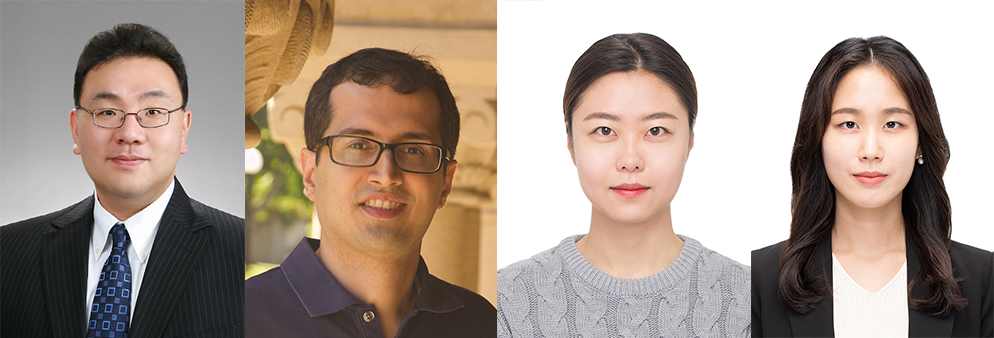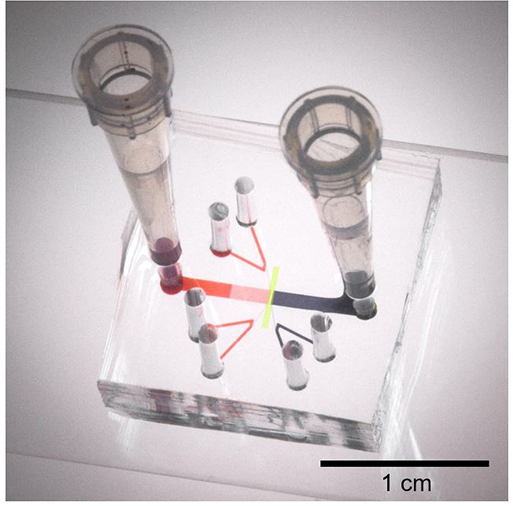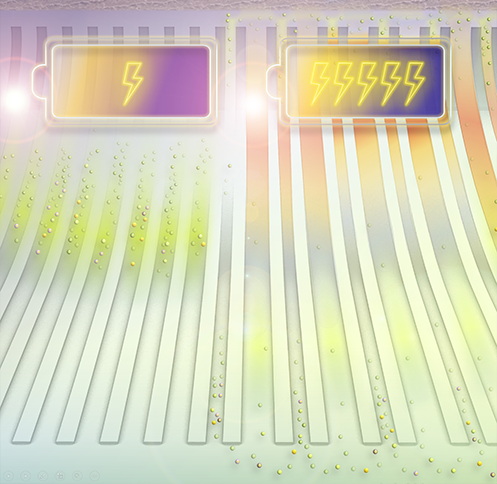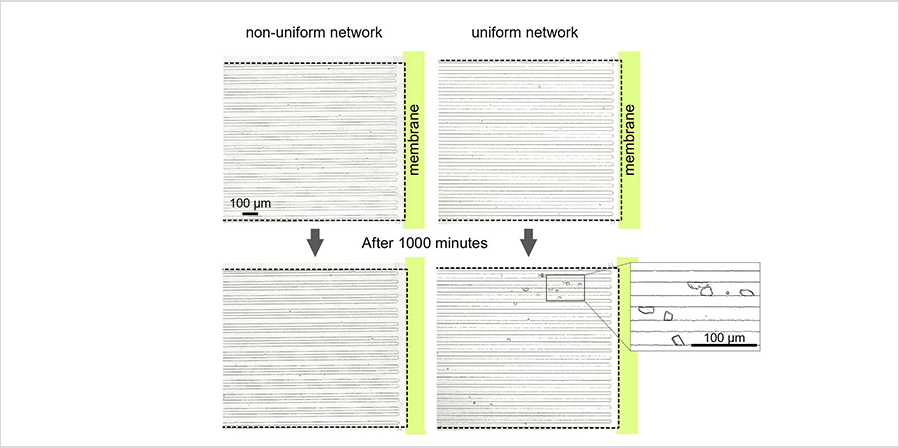Joint research with Stanford University, selected as the cover paper of <Nano Letters>, an authoritative journal in the field of nanotechnology
Proved the core of the nano-electrohydrodynamic phenomenon, expected to be useful in various fields such as the maximization of battery efficiency

From left, Professor Sung Jae Kim of Seoul National University, Professor Ali Mani of Stanford University, Hyekyung Lee, Post Doctoral Associate at UC Berkeley, and Seoyun Sohn, Ph. D. Candidate of Helmholtz-Zentrum Institute
Research results that have, for the first time, proved the core mechanism of nano-electrohydrodynamic phenomena have been published. It is a technology that is attracting worldwide attention for its ability to prevent performance degradation of nanoporous membranes - which play an important role in seawater desalination devices - or to maximize power efficiency in batteries.
Seoul National University College of Engineering announced on April 1 a mechanism of the recirculation flow generated between nonuniformly arranged microstructures accelerating the transfer of electrolyte ions through the nanoporous membrane has been demonstrated through a joint study by Professor Sung Jae Kim's team of the Department of Electrical and Computer Engineering with Professor Ali Mani's team at Stanford University.
After connecting two microchannels with a nanoporous membrane in between, the researchers theoretically/experimentally verified the recirculation flow generated by installing microstructures at non-uniform intervals inside the microchannel (picture a), and as a result of applying this circulation, it not only greatly increased the ionic current, but also succeeded in preventing salt crystallization near the porous membrane.
The nanoporous membrane has pores of less than 10 nanometers, and thus exhibits perm-selectivity, which means it transmits only ions that have polarity opposite to the surface charge of the membrane. When an external electric field is applied to such a system, a nonlinear overlimiting current phenomenon occurs that greatly deviates from the general Ohm's law (the law that the strength of a current is proportional to the potential difference between two points and inversely proportional to the electrical resistance) and the results of this research proved a new mechanism for inducing electric current.
The researchers were able to obtain the results after a systematic analysis by simulating and combining the non-uniform microstructures of nature. The findings of this research can be importantly used in the fields of energy and the environment and is expected to be particularly useful for batteries containing nanoporous membranes and seawater desalination devices.
The application of this research can maximize the charging efficiency of a battery by non-uniformly changing the microstructures already installed in front of the nanoporous membrane (pictures b.) and in the seawater desalination system, by minimizing the precipitation of unwanted salts that degrade the performance of the nanoporous membrane can be prevented (picture c.), it is expected to potentially be used to prevent fouling of the membrane.
"By persistently analyzing the phenomena we discovered by chance, we proved the core mechanism of the nano-electrohydrodynamic phenomenon. Currently, the joint research team is developing a platform that, using this technology, can be applied to batteries and seawater desalination devices," said Professor Sung Jae Kim of Seoul National University.
The results of this research were published online on March 31 in <Nano Letters>, an authoritative journal in the field of nano-science and technology and was selected as the cover paper. This research was carried out with support from the Ministry of Science and ICT's middle-level researcher support project and the basic laboratory support project.
For further information, please contact Prof. Sung Jae Kim.






